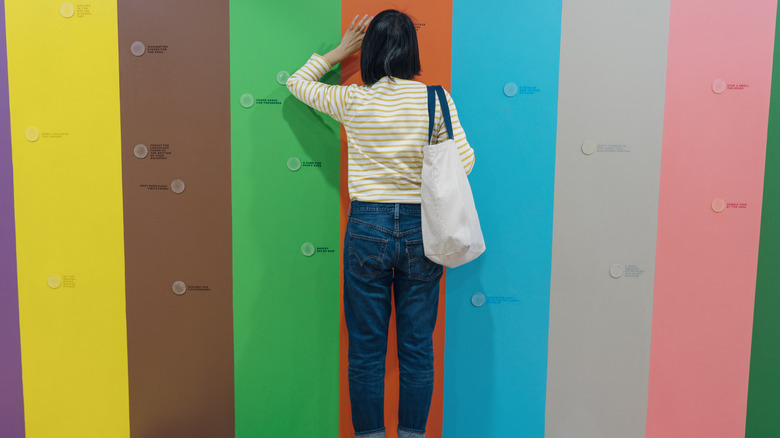How Are Scratch And Sniffs Made?
Let's be honest: scratch-and-sniffs are a weird thing. Imagine a lemur poking his finger through some decaying jungle goop, then smelling his finger before stuffing his nose into the ground. That's basically what we look like when we do the ole' scratch-and-sniff. No other product seeks a balance between "effective scented slurry," "effective carrier surface," and "effective top coat varnish" (quoting from The Institute of Art and Olfaction, which is a real thing). That gives us an idea of the actual material science and chemical manufacturing behind what started as an oddball advertising phenomenon.
Mental Floss outlines the whole scratch-and-sniff creation process. First, scented oil, water, and a synthetic cosmetic polymer such as "polyoxymethylene urea" are blended together until the oil breaks apart into microscopic balls. Then, an added chemical catalyst causes little plastic shells to form around each ball. These little balls are mixed with an adhesive and water until they form the aforementioned "slurry." Finally, this slurry is pasted onto paper using a variety of methods, including silk-screening (passing the slurry through a screen), web offset printing (continuously rolling paper through a printing press), "flexo-graphic printing" (used for scratch and sniff stickers), and extrusion (used for perfume and cologne samples). Bingo-presto: When you scratch the smelly patch, the oily balls crack. Instant eau de oregano.
Made How discusses a couple more additional steps, such as washing the blended oil balls before making the slurry. It has some handy infographics of factory processes, too.
An accidental chemical discovery
"Scratch 'N Sniff" is actually the trademarked name of a specific product, as The Sun explains, like "Kleenex" instead of "tissues." It first appeared in 1965 when chemist Gale Matson stumbled across the above-described "micro-encapsulation process" while working for the 3M Company, previously known as the Minnesota Mining and Manufacturing Company. Funny enough, she was investigating ways to make "carbonless paper," the paper used for carbon copies that you press down to transfer ink to duplicates and triplicates underneath. Fast-forward a couple of decades and we've got scented paper of rubber tires, roses, salami, burnt matches, skunks, Calvin Klein cologne, laundry detergent, that new car smell, and much more.
Scratch-and-sniffs aren't limited to '90s magazine ads and gag-gift paraphernalia, though. In 2010, artist Sissel Tolaas, "the world's pre-eminent olfactory cartographer," told The Atlantic how she was making a scratch-and-sniff map of the cities of the world, including Mexico City, Vienna, and Paris. She literally goes around smelling sidewalks, trash bins, and abandoned phone booths. She even previously built scratch-and-sniff maps of New York City (presumably including its "deep summer subway" scent). She can even use something called a "gas chromatograph/mass spectrometer" (GCMS) to help her "bring headspace technology into the field." Side note: we had no idea scratching and sniffing was widespread enough to constitute a "field."
Meanwhile, The Institute of Art and Olfaction holds "Mechanics of Scent Workshops" where folks can make their own DIY scratch-and-sniff scents.

